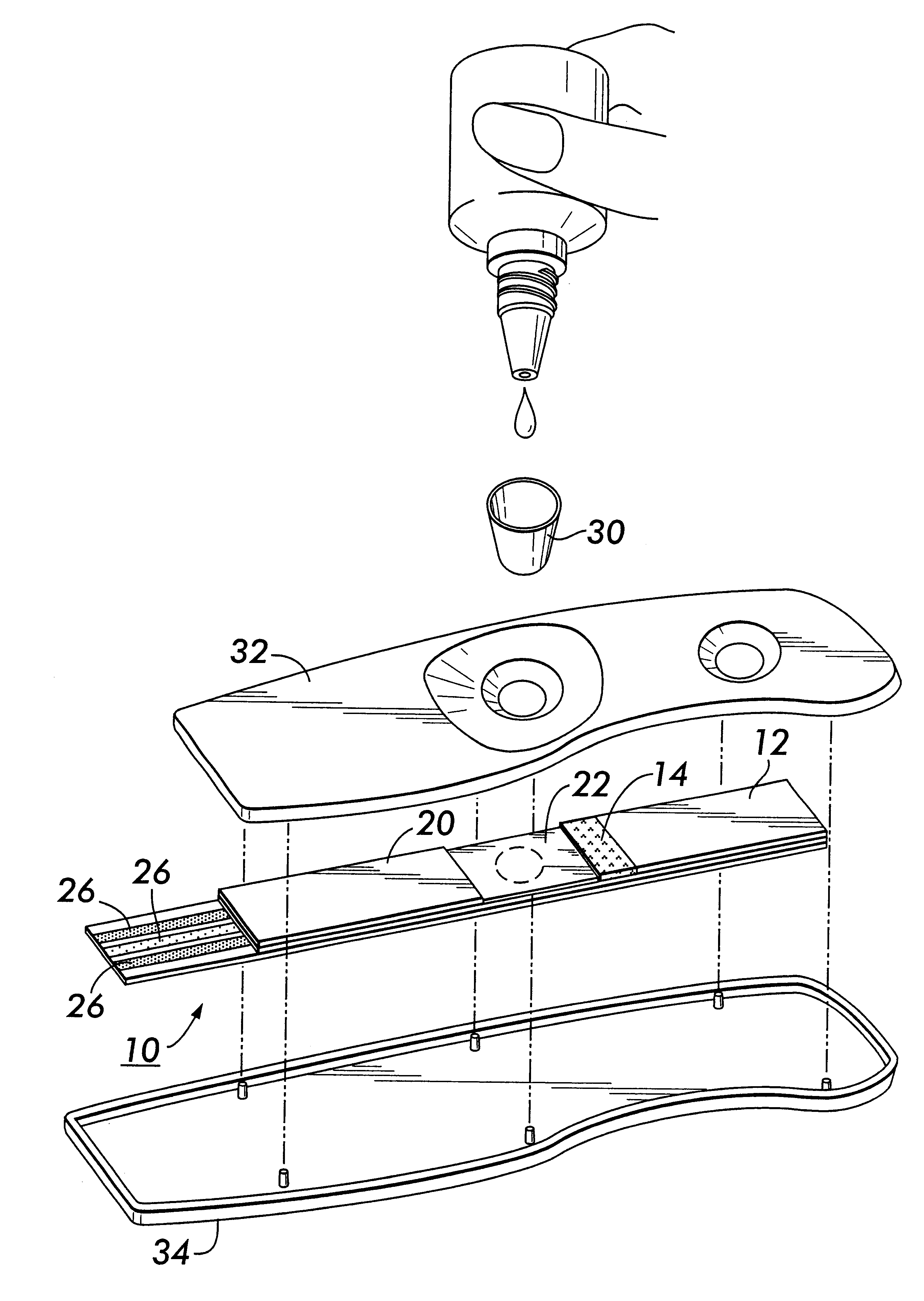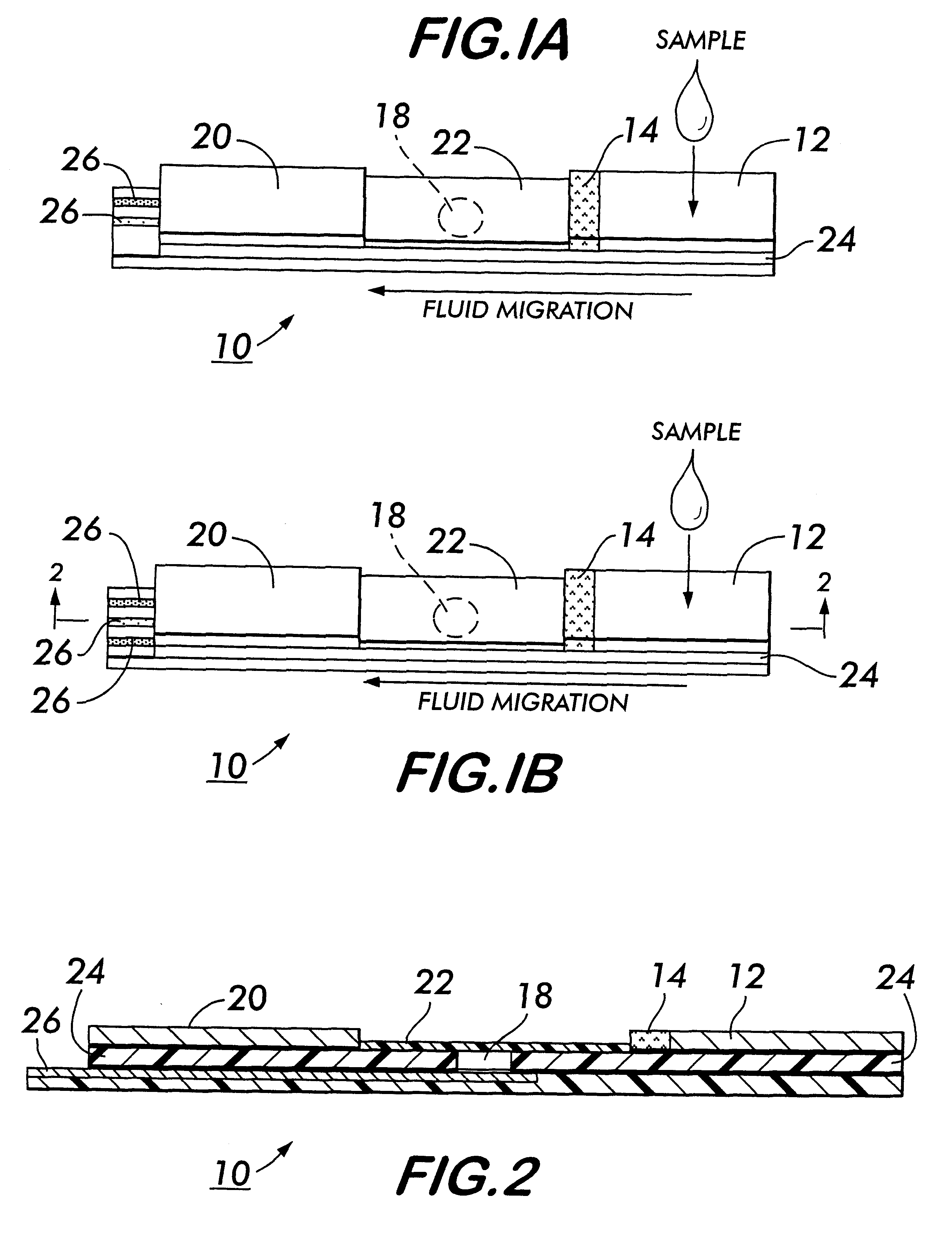System for electrochemical quantitative analysis of analytes within a solid phase
a technology of electrochemical and solid phase analysis, applied in the direction of diaphragms, immobilised enzymes, chemical/physical/physicochemical processes based on energy, etc., can solve the problems of inability to accurately measure the level of analytes, method is impractical and cumbersome, and rapid tests are generally unsuitable for precise quantitative monitoring of analyte levels. , to achieve the effect of wide linear range, low cost and high sensitivity
- Summary
- Abstract
- Description
- Claims
- Application Information
AI Technical Summary
Benefits of technology
Problems solved by technology
Method used
Image
Examples
example 1
1. Preparation of ions labeled proteins (e.g., antibody and antigen)
Diethylenetriamine pentaacetic acid and Triethylamine were dissolved in water with gentle heating. The resulting solution was lyophilized to yield a glassy residue and then such residue was dissolved in acetonitrile with gentle heating. This solution was added to isobutychloroformate in an ice bath during stirring for complete reaction. The resulting anhydride Diethylenetriamine pentaacetic acid was then reacted with protein in a protection solution at a certain molar ratio at room temperature. The reaction mixture was then dialyzed against a citrate buffer. An excess of label solution was added to the dialyzed solution and incubated at room temperature. The labeled protein was dialyzed against phosphate buffer solution. The proteins (AntiHBsAg Ab, AntiHCG Ab, AntiMyoglobin Ab, AntiTroponine I Ab, G-SAG, IgG-Fc, HIV and HCV etc.) are well labeled by metal ions (e.g., Bismuth, Lead, Indium, Thallium and copper) using...
example 2
Nucleic Acids (Oligonucleatides, DNA and RNA) Sensor
1. Preparation of ions labeled oligonucleatide
Diethylenetriamine pentaacetic acid and Triethylamine were dissolved in water with gentle heating. The resulting solution was lyophilized to yield a glassy residue and then such residue was dissolved in acetonitrile with gentle heating. This solution was added to isobutychloroformate in an ice bath during stirring for complete reaction. The resulting anhydride Diethylenetriamine pentaacetic acid was then reacted with oligonuleatides at a certain molar ratio at room temperature. The reaction mixture was then dialyzed against a tris buffer. A excess of label solution was added to the dialyzed solution and incubated at room temperature. The labeled oligonucleotide was dialyzed against tris buffer solution. The labeled oligonucleotide was used to prepare a solid phase & affinity test sensor.
2. Preparation of affinity chromatography solid phase test device
Two conductive deposits or areas (fo...
PUM
| Property | Measurement | Unit |
|---|---|---|
| concentrations | aaaaa | aaaaa |
| area | aaaaa | aaaaa |
| concentration | aaaaa | aaaaa |
Abstract
Description
Claims
Application Information
 Login to View More
Login to View More - R&D
- Intellectual Property
- Life Sciences
- Materials
- Tech Scout
- Unparalleled Data Quality
- Higher Quality Content
- 60% Fewer Hallucinations
Browse by: Latest US Patents, China's latest patents, Technical Efficacy Thesaurus, Application Domain, Technology Topic, Popular Technical Reports.
© 2025 PatSnap. All rights reserved.Legal|Privacy policy|Modern Slavery Act Transparency Statement|Sitemap|About US| Contact US: help@patsnap.com



